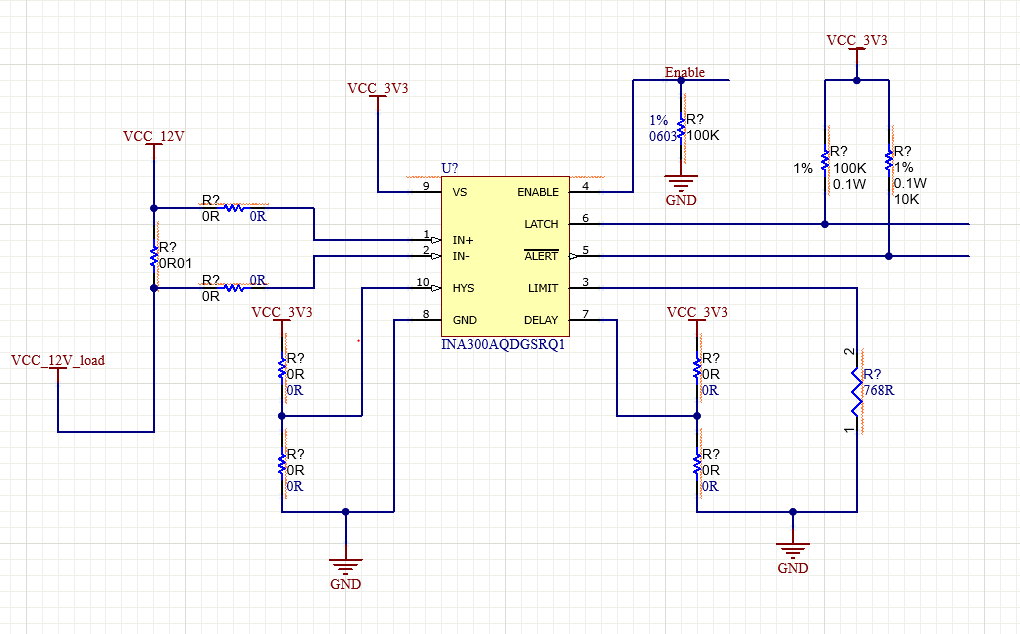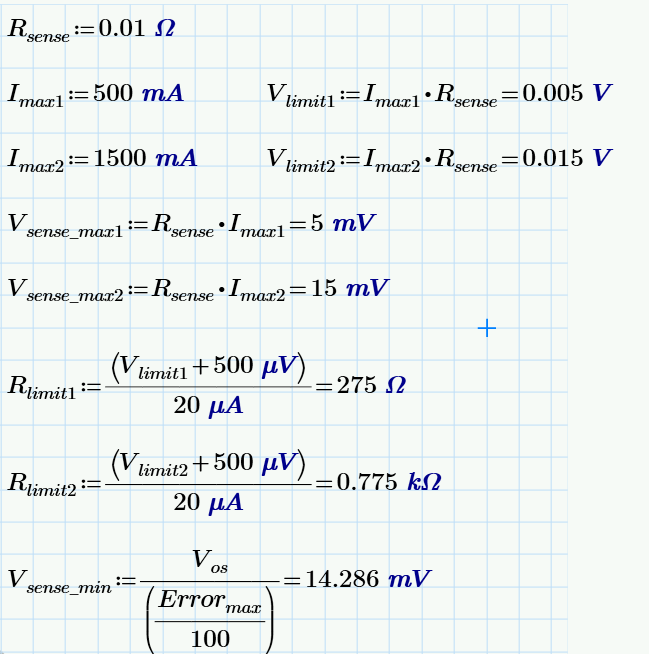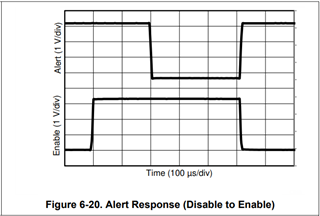Other Parts Discussed in Thread: INA300
Hi Team,
I'm utilizing the INA300-Q1 in my design for overcurrent protection, and the schematic is provided for your reference.

The design is intended for two different loads:
1. 12V@1.5A max (as depicted in the above schematic)
2. 15V@500mA max
The VCC_12V or VCC_15V is supplied by a 2A DC-DC converter. My approach is to use the sense resistor for 2A support and control the load current limit by choosing the appropriate limit resistor.
I've selected a current sense resistor of 10mOhm, and here are the calculations for finding the Limit Threshold Setting Resistor, RLIMIT:

1. I'm a bit confused with the Vsense_min value calculation. According to the datasheet, Vsense_min is calculated as shown above, considering a 3.5% Errormax. Could you please explain the significance of this value? My calculations indicate that the Vsense_max for a 500mA current is 5mV, which is less than Vsense_min. Does this mean the INA300-Q1 might struggle to sense the load current?
2. Kindly review the schematic and let me know if any modifications are required to align with my requirements.
--
Thanks in Advance
Kiran



